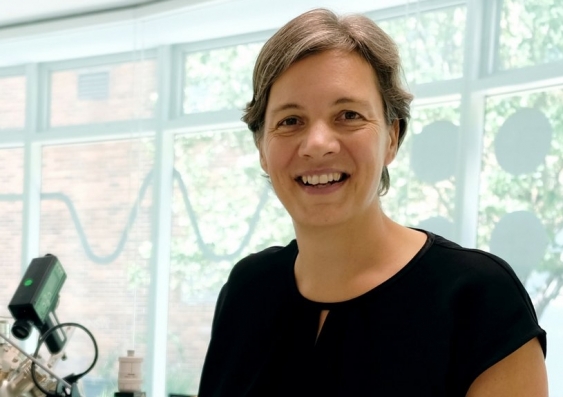UNSW Scientia Professor Michelle Simmons elected Fellow of the Royal Society
Michelle Simmons was awarded the fellowship for her pioneering work in the field of quantum computing.
Michelle Simmons was awarded the fellowship for her pioneering work in the field of quantum computing.

The Royal Society of London, the world’s oldest independent scientific academy, announced Scientia Professor Michelle Simmons has been elected to receive a Fellowship of the Royal Society.
Professor Michelle Simmons is the 2018 Australian of the Year. She is an Australian Research Council Laureate Fellow and Director of the Centre of Excellence for Quantum Computation and Communication Technology based at UNSW. She is one of a handful of researchers in Australia to have twice received a Federation Fellowship and now a Laureate Fellowship, the Australian Research Council’s most prestigious award of this kind.
She has won both the Pawsey Medal (2006) and Lyle Medal (2015) from the Australian Academy of Science for outstanding research in physics and was, upon her appointment, one of the youngest fellows of this Academy. She was named Scientist of the Year by the New South Wales Government in 2012 and in 2014 became one of only a few Australians inducted into the American Academy of Arts and Sciences.
In 2015, she was awarded the CSIRO Eureka Prize for Leadership in Science and in 2016 the Foresight Institute Feynman Prize in Nanotechnology for her work in the new field of atomic electronics, which she created.
Recently recognised by the American Computer Museum as a pioneer in quantum computing, she is Editor-in-Chief of Nature Quantum Information and was named the 2017 L'Oréal-UNESCO Asia-Pacific Laureate in the Physical Sciences.
The fellowship, which is the highest scientific honour bestowed by the academy, is a lifetime membership. Fellowships are awarded to individuals who have been judged to have made a “substantial contribution to the improvement of natural knowledge, including mathematics, engineering science and medical science.”
Professor Simmons, the 2018 Australian of the Year, has been recognised for her contribution to the field of quantum computing and is renowned as a pioneer in atomic electronics. Her vision and leadership have engendered a radical new technology for fabricating electronic devices with atomic-precision accuracy.
By manipulating matter at the atomic scale, she led the team that created the world’s smallest precision transistor, the narrowest conducting wires in silicon and the first transistor where a single atom controls its operation.
Her ground-breaking achievements have opened a new frontier of research in computing and electronics globally, providing a platform for redesigning conventional transistors and for developing a quantum computer: a new form of computing with the potential to transform information processing.
“I am delighted and honoured to be elected a Fellow of the Royal Society,” said Professor Simmons, Director of the Centre of Excellence for Quantum Computation and Communication Technology at UNSW. “This award is further recognition of the work that we are doing right here in Sydney. I have been very fortunate over the years to have so many truly outstanding students and postdocs in my group at UNSW.”
Professor Ian Jacobs, UNSW President and Vice-Chancellor, said: “My congratulations to Professor Simmons on this prestigious honour, recognising her ground-breaking research in quantum computing.”
“Her passion, determination and dedication have positioned Australian researchers at the forefront of a key industry of the future, that is set to revolutionise science in Australia and around the world.”
Founded in the 17th Century, the Society lists some of the most renowned scientists in history including Isaac Newton and Stephen Hawking. Professor Simmons becomes the fourth UNSW academic to be elected to the Royal Society, joining Professors Trevor McDougall (2012), Martin Green (2013) and Richard Harvey (2016).
Professor Simmons will be formally admitted to the Society at an official ceremony to take place in London in July.
For more information visit www.cqc2t.org.
MEDIA CONTACT: Patricia Butera Communications Manager, UNSW M: +61 419 482 184 E: p.butera@unsw.edu.au